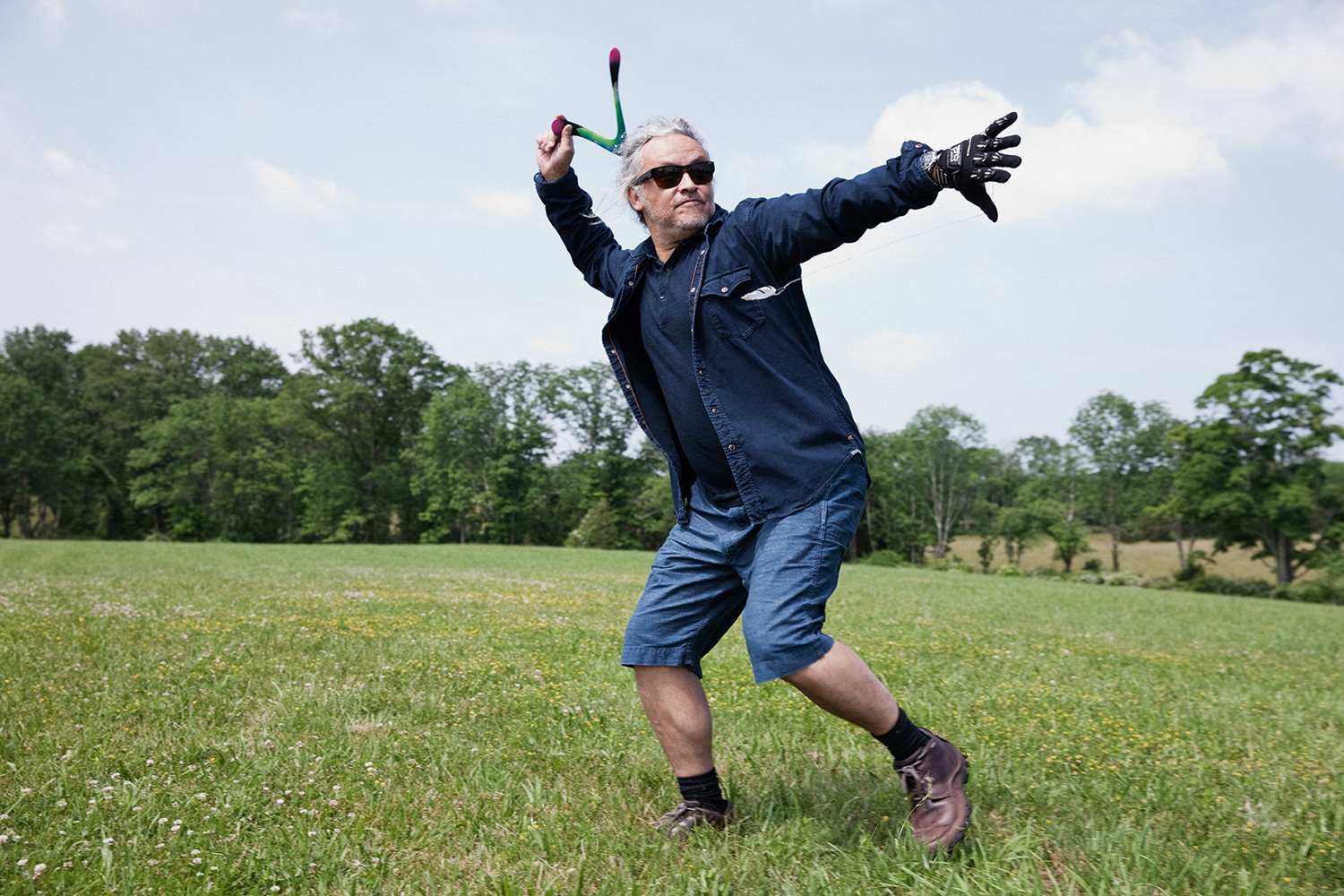Purple Magazine
— F/W 2013 issue 20
Gabriel Orozco
 Gabriel Orozco
Gabriel Orozco
on boomerangs
interview and photography ALEXIS DAHAN
ALEXIS DAHAN — When and how did you start practicing the boomerang?
GABRIEL OROZCO — I guess about six years ago. I was spending summers in Burgundy, in France, buying kites for my son to fly. One shop sold boomerangs, which looked quite good, not like fake, touristy things that don’t work. I bought a couple and I spent a whole summer trying to fly them. After that I became passionate about boomerangs. Now it’s somehow my favorite sport. I have many different ones now.
ALEXIS DAHAN — How is a boomerang made? And could it be called a non-industrial object?
GABRIEL OROZCO — Boomerangs are non-industrial because of the limited demand. It’s a difficult sport. It’s not easy to throw. A lot of people are quickly disappointed because it’s so hard to throw, and then…